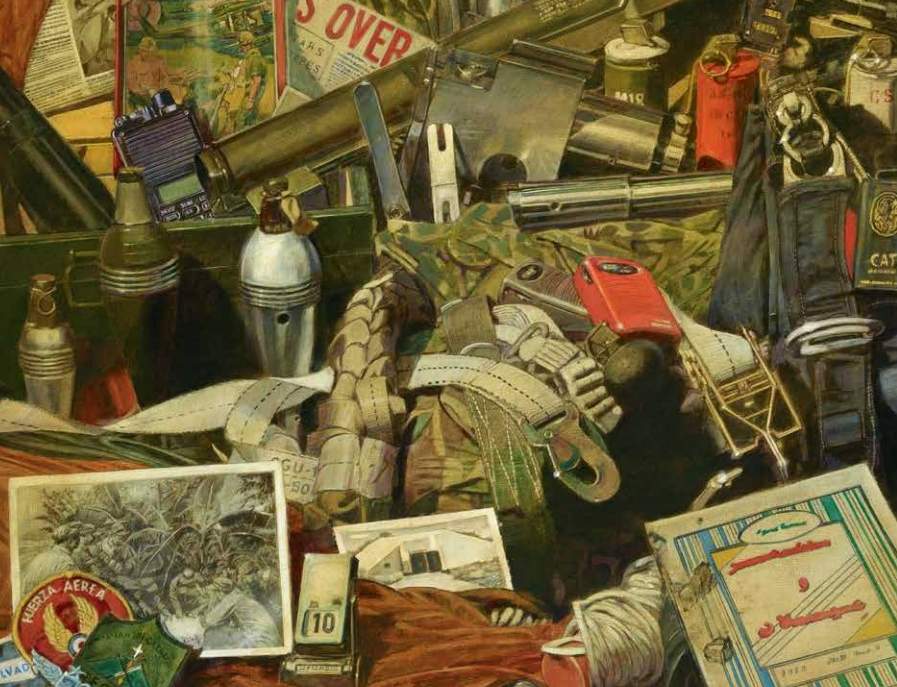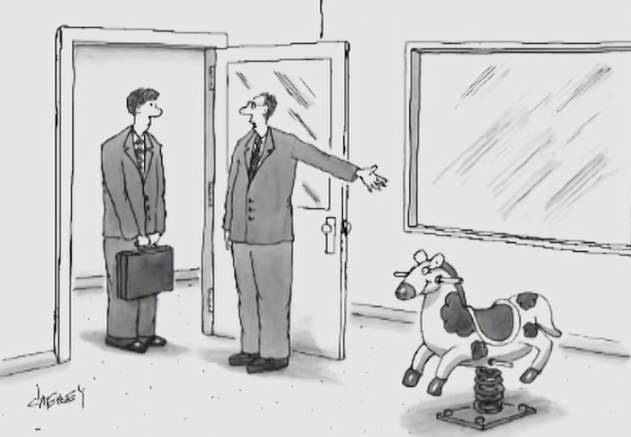Spy Games To Test, Measure & Boost Your Creativity
If you're going to excel at spy operations, you'll need to be creative in the field. We've put together three missions based on real-life espionage tests to get your started - and the clock is ticking.
MISSION 1: You’re behind enemy lines with four other intelligence officers. You must collect a sample of local explosives, detonate what’s left, and get to the exfiltration spot so the CIA team can get you safely home. The enemy is about 30 minutes away and knows your location. There’s a gushing, 15-foot wide river separating you and the explosives, preventing you from swimming across it or jumping.
YOUR TOOLS: You must tackle the chasm using what’s available - two sturdy trees on either side of the bank; a discarded barrel with both ends knocked out; and a pile of boards ranging from four to seven feet long. In your rucksack, you have three lengths of rope, a pulley, and a box of matches. How do you cross the river?

MISSION 2: You’re leading a team in enemy territory who have successfully completed an undercover operation at an airfield and are now gathered at a safe rendezvous point in a field. One of your team members, Gus, has broken both legs and from this point onward needs to be carried on a stretcher that you have managed to secure. Your team must get to a second, secret airfield where a plane awaits to extract you, but you only have minutes or the pilot will depart without you. To reach the secret airfield, you must cross a road routinely patrolled by an armed sentry on foot. The sentry walks back and forth and seems to go out of view for about 45 seconds during each of his rounds but time is short. You can't afford to wait around indefinitely. How will you organize your team to get across the road and meet the plane that will carry you to safety?
YOUR TOOLS: You have your wits and the support of a highly trained team.
.webp)
MISSION 3: You are the leader of a team returning on foot from an operation where you blew up a bridge in enemy territory about a mile away. According to a prearranged extraction plan, you are to meet a truck in 10 minutes at a meeting point that is another mile away. To get to the truck, you must cross a road littered with mines that cannot be neutralized or dug up. You must cross the road at a specific section clearly marked by white lines that are about 12 feet apart. The enemy are aware of the bridge explosion, but don’t know in which direction you have gone.
YOUR TOOLS: The road is lined with trees and bushes on both sides. There are two logs nearby, one is 12-feet long and another is 14-feet long. There are also some stones, a few two-by-fours about four feet in length, and two lengths of rope. How will you organize your team so you can cross the mined road between the white lines, arrive at the meeting point in 10 minutes, and leave the least amount of evidence behind you so the enemy can’t track your movements?
Time’s up
Do the tests sound like impossible challenges? If so, you’re probably not getting hired. There are actually many solutions to these three problems, all of which were posed by real-life intelligence trainers to teach creative thinking. (See answers below.)
The theoretical river problem, sentry challenge, and road mine problems are based on tests developed by the Office of Strategic Services, the US intelligence agency that recruited WWII officers at the secretive ‘Station S’ outside of Washington, D.C. The river test (which in real life involved a babbling brook and no explosives) and other tests are outlined in Assessment of Men, three of the many challenges used by the OSS to measure the creative skills of potential counterterrorism and espionage officers.
Decades later, the CIA is still testing creative skills. If you interviewed with the CIA Directorate of Analysis in 2019, for example, you’d have been asked to imagine a commonly accepted future in the political or technological sphere - then argue for an alternative future.

"The brand new social experience where you activate your gaming skills as you train like a spy."
- TimeOut
Take on thrilling, high-energy espionage challenges across different game zones.

Creative challenges
Role-playing and visionary thinking aren’t the only ways to test creative thinking, as SPY HQ fans know.
A former head of training at MI6 (British Intelligence) developed SPYCHOLOGY’s authentic, online tests to uncover spy superpowers. It is based on scientific research and methods commonly used by psychologists to identify and evaluate cognitive, emotional, and social traits.
On completion of the online challenges, participants receive a unique and authentic profile of their personality, attributes, skills, and potential to discover which of the 10 archetypal roles suits them best: A calculating cryptologist? A charismatic agent handler? A politically-savvy spymaster?
Individual SPYCHOLOGY profiles can be shared with friends, family, and colleagues to help build better bonds and understanding.

Measuring creativity
TikTok users have also created a buzz around creativity testing by competing for the highest scores using a four-minute online test created by researchers at Harvard, Canada’s McGill University, and Australia’s University of Melbourne. The Divergent Association Task is a quick measure of verbal creativity and divergent thinking - in other words, the ability to generate diverse solutions to open-ended problems.
TikTok Influencer Kamri Noel posted a challenge to her followers, boasting of her 94.49 score - an impressive 99.32 percent higher than other test-takers. But is the 10-question online test a trend or a serious, academic-based study? Both, it seems.
Millions have taken the online test and researchers will narrow results down to a subset to ensure they're working with valid data. “I believe this will make it the largest creativity study out there,” Jay Olson, a Ph.D. postdoctoral scholar at McGill’s Department of Psychology, told SPYSCAPE.
This task measures only one part of creativity, however.
“There are no measures of creativity that capture the entire broad construct,” Olson said. “In research, we often use multiple measures to assess different facets of creativity; here we only assess one part of verbal divergent thinking… So it’s definitely not a perfect measure, but it does correlate with scores on other creativity tasks.”

How to boost your creativity
Do you need help raising your creativity quotient? Stanford Professor Tina Seelig has been studying creativity for 35 years and suggests you consider the way you frame questions. If you ask: “What is the answer to 5+5=X?”, you’ll get one answer. If you ask: “Which two numbers add up to 10?”, the answers are infinite.
Seelig also suggests pairing things in unusual ways: “Most innovation comes from putting things together that haven’t been together before, often in really unusual and surprising ways.”
That’s why The New Yorker cartoons work so well. Seellg believes that true innovators and entrepreneurs are more quilt makers than puzzle solvers: “They basically take all of the resources around them… They leverage the materials that are available to them and create something that is surprising and really fascinating.”
Still not sure where to start? If creativity isn’t your forte, try the Phoenix checklist below as the basis on which to build your own personal list of questions about your challenge and potential creative solutions.

***
If you like the world of secrets and spies you’ll love SPYGAMES.
SPYGAMES is the thrilling new experience developed with experts from CIA and Special Ops to stretch your physical and mental skills.
SPYGAMES comprises a series of high-tech game rooms where you’ll choose to compete or collaborate in fun challenges. You’ll jump, dodge, hide, throw, and climb through dozens of different games and levels. Your personal identity band tracks your progress as you hone your fitness and skills with every visit.
www.spygames.com
SPYSCAPE+

Join now to get True Spies episodes early and ad-free every week, plus subscriber-only Debriefs and Q&As to bring you closer to your favorite spies and stories from the show. You’ll also get our exclusive series The Razumov Files and The Great James Bond Car Robbery!


Gadgets & Gifts
Explore a world of secrets together. Navigate through interactive exhibits and missions to discover your spy roles.
Your Spy Skills
We all have valuable spy skills - your mission is to discover yours. See if you have what it takes to be a secret agent, with our authentic spy skills evaluation* developed by a former Head of Training at British Intelligence. It's FREE so share & compare with friends now!
* Find more information about the scientific methods behind the evaluation here.


Stay Connected
Follow us for the latest
TIKTOK
INSTAGRAM
X
FACEBOOK
YOUTUBE